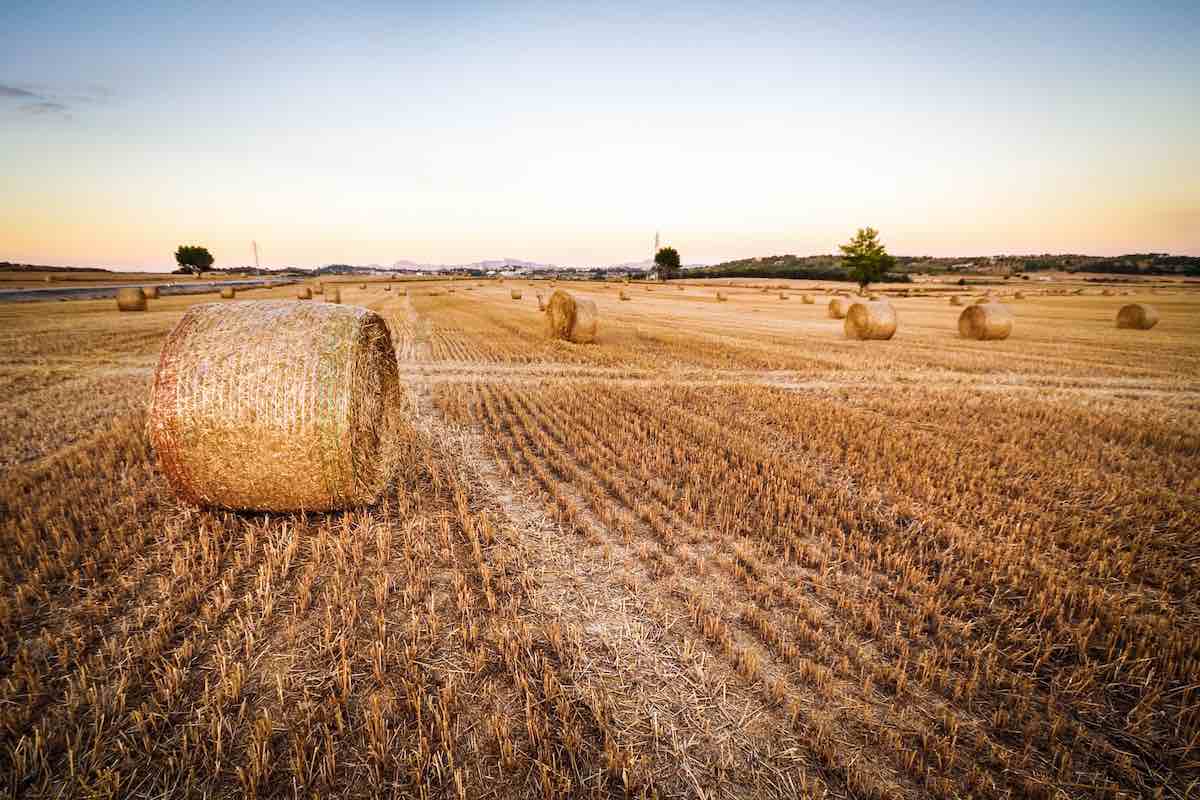Taking proper care of your farm’s livestock is of the utmost importance for their well-being and success.
Green fodder production can provide a cost-effective solution to ensure they get all the nutrients they need.
Cereal grains and legumes are ideal for growing nutritious fodder that will help keep your animals healthy and strong.
Not sure where to begin when it comes to producing green fodder? We’re here to help – our guide has everything you need to know about creating a nourishing feed for your animals quickly and easily.
With just a little bit of effort, lush, nutritious feed will be within reach in no time!
What are the different types of fodder to get?
You can cultivate various green fodders, including trees, grasses, cereals, and legumes, for animal feed and livestock feed!
Trees
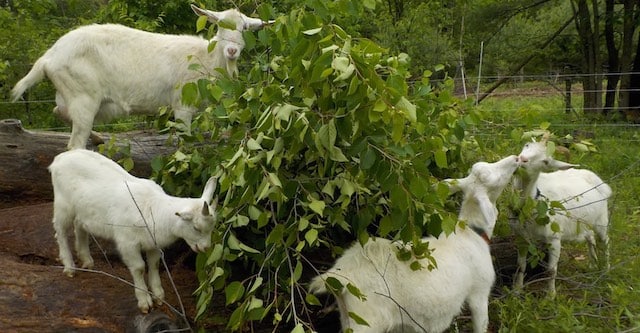
Trees are a good source of fodder and green manure.
- Sesbania (Sesbania grandiflora): The sesbania tree is leguminous with light gray, pale bark. It can survive in seasonally flooded valleys and develop floating roots if flooded. One hectare of sesbania can produce a yearly green fodder yield of 100 tons.
- Gliricidia (Gliricidia sepium, Gliricidia maculata): Gliricidia is a semi-deciduous tree that cannot tolerate being planted in water-logged areas. This is a multi-functional tree that can be used as both green fodder and firewood. It’s also useful as a source of green leaf manure to nourish the soil without using chemical fertilizers. Gliricidia also fixes atmospheric nitrogen and can be used as living fencing and support plants for other crops.
- Subabul (Leucaena leucocephala): Subabul is used in warmer areas as fuel wood and a source of green fodder. It can survive drought, but let the tree grow for two years before harvest to ensure deep root penetration and sturdiness. We recommend letting each tree complete one seed production cycle before harvesting its seeds.
Grasses
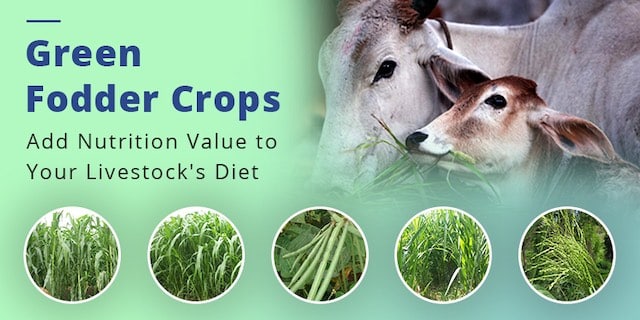
The grass usually comes to mind when you think of green form fodder.
- Blue buffel grass (Cenchrus ciliaris): Blue buffel is a perennial grass fodder that grows best in well-drained soil. It’s used for erosion control and growing in rocky eroded sites. It can be harvested and turned into hay in the early flowering stage.
- Para grass (Brachiaria mutica): Sometimes called buffalo grass, this grass is typically found in dry African countries. It’s commonly used in lawns and is a good forage crop. This grass prefers warmer regions with a consistent temperature of 68°F or higher. It can tolerate tropical areas with poor drainage and grows quickly. b. mutica propagates through cuttings, which need to be placed in wet soil, leaving both ends exposed.
- Napier grass (Pennisetum purpureum): Napier grass can be used as green fodder and a source of hay and silage. It produces lots of planting material and can be propagated through either stem cuttings or root slips.
- Guinea grass (Megathyrsus Maximus): m. maximus is a fodder grass that grows quickly in well-draining soils. It cannot tolerate heavy clay soil or excessive watering. m. maximus should be fed to livestock alongside a source of protein for greater nutritional value.
Cereals
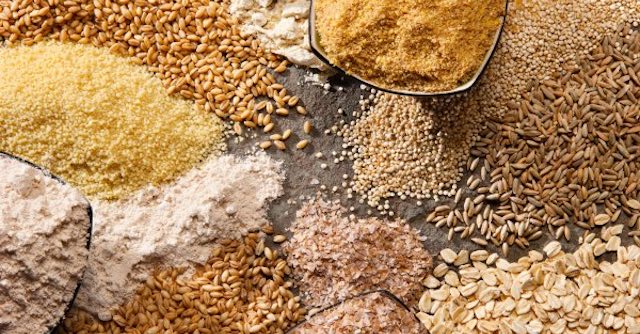
Cereal fodder, like barley or millet, is another good source of nutrients. Farmowners may opt to turn their fresh growth into sprouted grains.
- Barley (Hordeum vulgare): Barley is a quick-growing crop that can tolerate various temperatures. They can be either high- or low-yield, depending on the cultivar.
- Pearl millet (Pennisetum glaucum): Millet is an important source of fodder and is great as both animal and human food. It’s starchy and should be supplemented with protein.
- Sorghum (Sorghum bicolor): Sorghum is a drought-resistant annual crop that thrives in a tropical climate. It was once confused for pearl millet because of their similar growth cycles. Its growth slows in cooler climates.
- Corn (Zea mays): Corn has an average green fodder yield of 40-50 tons/ha. Practice end-of-life irrigation with corn by consistently rinsing it until the kernels reach maturity. Stopping irrigation before maturity can greatly reduce your yield.
Legumes
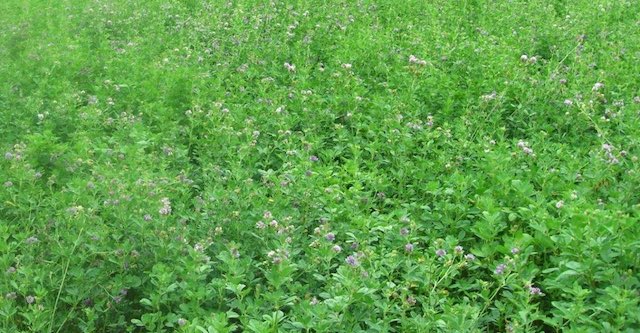
Legume fodder is full of protein and fiber and can be planted as short-term fodder crops or permanent pasture land.
- Stylo (Stylosanthes guianensis): Stylo can tolerate fairly infertile and acidic soils and grows best when planted in a warmer climate. Recent anthracnose-resistant stylo cultivars have been developed to make this crop hardier. Stylo takes a few years to establish itself before becoming fully productive. Expect a low initial harvest and greater subsequent harvests, depending on its initial growth.
- Cowpea (Vigna unguiculata): Cowpeas thrive in sandy soils and grow best in warm-temperature regions. This tolerance to warmth has made it an important green fodder crop in hotter Asian and African countries. It has a subspecies known as “black-eyed peas” because of its appearance.
- Alfalfa (Medicago sativa): This legume is notable because it improves soil fertility by adding nitrogen to its surroundings. Alfalfa is good for fodder but doesn’t tolerate close grazing, so give your fodder time to regrow.
How Much Should I feed my Cows?
Understanding the appropriate quantity of feed for your cows is crucial for their health, productivity, and overall well-being in cattle farming.
The video below provides valuable insights into determining the optimal feeding amounts for your cows, taking into account factors such as age, weight, and stage of production.
By following the guidelines presented in the video, you’ll be able to optimize your feeding strategy.
Conclusion
Green fodder is the smart choice when it comes to feeding your livestock.
It is beneficial for providing essential nutrients, promoting healthy digestion, reducing feeding costs, and improving overall animal well-being, while also having a positive impact on the environment.
It keeps your animals healthy but also helps replenish the soil with essential nutrients while avoiding any risks associated with BSE or Mad cow disease.
Investing in green fodder production is not only a sound financial decision, but doing so will also ensure that your animals remain well-nourished and strong.
FAQs – Different Fodder Types Explained
Fodder types encompass grasses, hay, silage, and grains, each with unique nutritional profiles. Grasses include pasture varieties, while hay consists of dried grasses or legumes. Silage is fermented forage, and grains serve as supplemental energy sources.
Selecting the ideal fodder requires evaluating animal species, age, production stage, and nutritional needs. Additionally, consider local availability, cost, and nutritional content of various fodder options. Consulting a veterinarian or animal nutritionist can help.
To enhance fodder quality, focus on proper harvesting and storage techniques, appropriate fertilization, and effective crop rotation strategies. Mixing high-quality grains or other feed supplements with lower-quality forage can also improve overall nutrition.
Cultivating diverse fodder types offers numerous benefits like meeting varied nutritional needs, promoting soil health, reducing risk due to crop failure, and providing a continuous supply of fresh forage throughout the year.
